Apply now to join our next cohort of Community Science Fellows and Community Leads!
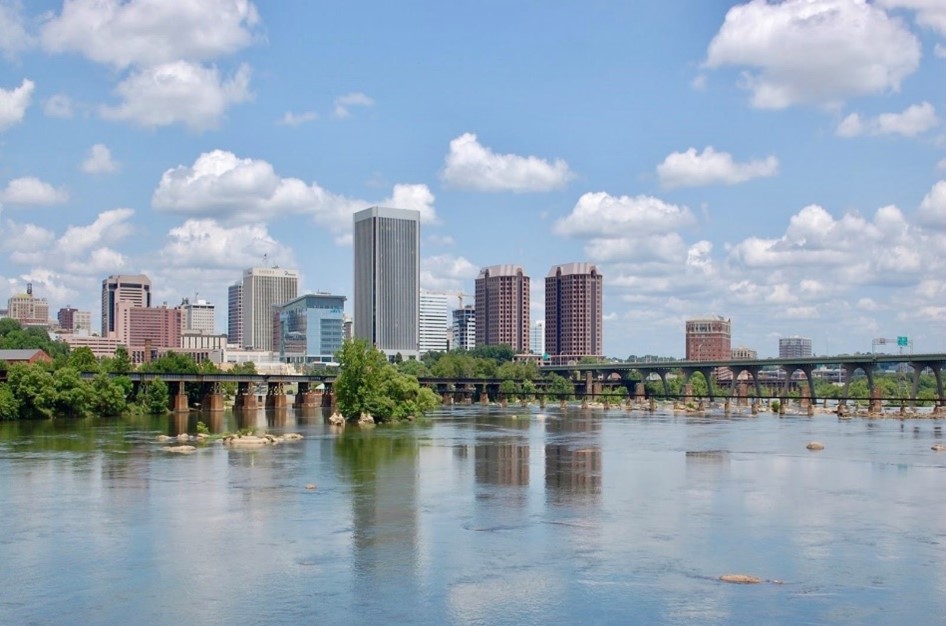
City of Richmond skyline
Richmond is getting hotter and wetter due to climate change. In 2017, Mayor Levar Stoney announced RVAgreen 2050, the City’s equity-centered climate action and resilience planning initiative. RVAgreen 2050 aims to achieve net zero greenhouse gas emissions by 2050 and to help the community adapt to climate impacts such as extreme heat, extreme precipitation and sea level rise. As an input to the RVAgreen 2050 planning process, which launched in early 2020, the Office of Sustainability is conducting a climate vulnerability and risk assessment, which identifies the people, neighborhoods, built assets, and natural resources in the city that will be most impacted by climate change. Given that there are limited resources to address the City’s adaptation and mitigation needs, it is important to conduct this assessment to prioritize actions that address the highest risks and most immediate vulnerabilities, while also allowing for future flexibility. Office of Sustainability staff have evaluated and mapped in ArcGIS over 150 demographic variables, built assets, and natural resources. These range from factors that affect a person’s ability to deal with very high temperatures, such as respiratory illness and access to air conditioning, to critical community assets such as police stations and bridges that could be impacted by increased storms. The Office of Sustainability also created an innovative map-based tool called the Climate Equity Index that is available to all city staff and the public to enable a better understanding of how climate change is impacting the community.
Precipitation modeling for Richmond will be an integral part of the city’s climate vulnerability and risk assessment. The city worked with a class at Drexel University to model precipitation projections in Richmond at various future time scales while accounting for the ways in which climate change will modify the volume, timing, and distribution of precipitation throughout Richmond. The precipitation modeling results were completed in August 2020. A sample of the data is below; the full dataset and methodology will be provided to the project scientist.
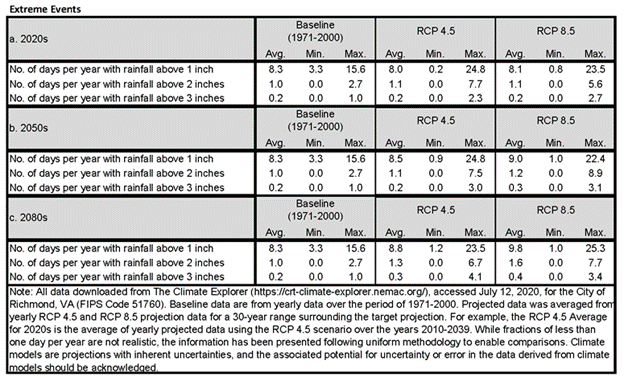
Projected extreme events for Richmond, VA
The project idea is to further develop the city’s assessment by applying the precipitation modeling projections to Richmond’s topography and built infrastructure and to identify the areas and assets that are most vulnerable to future flooding. The resulting flood maps will help the city and the community assess the exposure of Richmond’s critical infrastructure and community resources to flooding, and provide a detailed dataset to identify at-risk areas and assets. It will also help to prioritize areas of the city in need of adaptation actions.
An example of this type of modeling was completed for the City of Somerville, MA’s climate vulnerability and risk assessment (see Appendix D for methodology). A city-wide “bathtub analysis” was used to apply future design storms (Storm models created by the researcher to test different assumptions about the impact of a storm based on a storm’s duration, frequency, etc.) to the city terrain to identify areas within the city that are most vulnerable to flooding due to local topography.
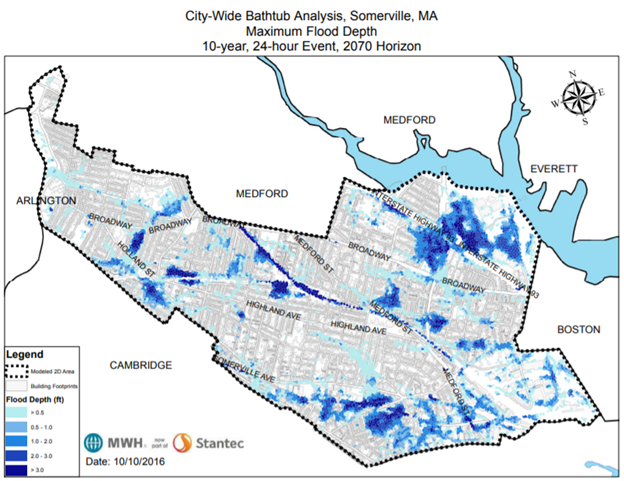
City-wide bathtub analysis for Somerville, MA
This information will be made available to all city staff and the public to enable Richmonders to better understand how climate changes could impact the city and how they can adapt to future climate change. The community hopes that, in partnering with an expert scientist, Richmond citizens and government will acquire flood maps that clearly represent flood-risk scenarios for the city. The flood maps and associated data will be helpful communication tools for key community stakeholders and the city’s RVAgreen 2050 initiative.
Data Availability: The City of Richmond has geographic data available in many formats including LIDAR, ortho, and others as needed.
Founded in 1737, Richmond is the capital of the Commonwealth of Virginia. As of 2019, Richmond’s 62.5 square miles are home to a population of 230,436. Between 2010 and 2017, Richmond’s diverse population grew by 11%, outpacing surrounding counties’ growth rates during the same period.
The city is at the fall line of the James River, at the intersection of Interstates 95 and 64. An economically progressive city, Richmond offers a wealth of amenities: beautiful neighborhoods with striking architecture, a vast cultural and educational heritage befitting its more than 230,000 residents, and notable history. The city consistently ranks among the “Best Places to Live and Work in America” in several national publications.
Richmond, however, is not without its challenges. Twenty-six percent of Richmonders are living in poverty, an increase from 21% in 2000. Over 20% of Richmond households are cost burdened, spending more than 30% of their income on housing. Although over half of the city’s population identifies as non-white, the city’s neighborhoods reflect the legacy of racist policies, with the homes of people of color concentrated in specific neighborhoods. Data collected by the Office of Sustainability show that areas of the city with higher proportions of people of color also face higher rates of poverty, chronic illness, crime, and other factors that increase overall social vulnerability. Without updates to existing critical infrastructure and resources, such as increased tree canopy and green space, modern stormwater infrastructure, and efficient buildings, these neighborhoods are also especially vulnerable to a changing climate. For these reasons, it is critical that the City of Richmond’s efforts to address climate change are carried out in a way that includes its vulnerable communities.
 Brianne (Mullen) Fisher is the Sustainability Coordinator for the City of Richmond, Virginia. Brianne supports efforts related to RVAgreen 2050, the City’s equity-centered climate action and resilience planning initiative to achieve net zero greenhouse gas emissions by 2050 and help the community adapt to the impacts of climate change. In previous roles, she has worked for Yale University, the Urban Sustainability Directors Network, and the Partnership for Smarter Growth. Brianne has a Juris Doctor from the University of Richmond School of Law and a Master of Urban and Regional Planning from Virginia Commonwealth University.
Brianne (Mullen) Fisher is the Sustainability Coordinator for the City of Richmond, Virginia. Brianne supports efforts related to RVAgreen 2050, the City’s equity-centered climate action and resilience planning initiative to achieve net zero greenhouse gas emissions by 2050 and help the community adapt to the impacts of climate change. In previous roles, she has worked for Yale University, the Urban Sustainability Directors Network, and the Partnership for Smarter Growth. Brianne has a Juris Doctor from the University of Richmond School of Law and a Master of Urban and Regional Planning from Virginia Commonwealth University.
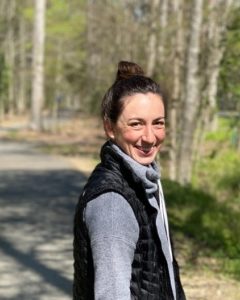 Jenn Clarke is the Public Education and Outreach Coordinator for the City of Richmond’s Stormwater Utility and their integrated RVAH2O clean water initiative. With diverse experience in communications at the intersection of human and environmental wellness, Jenn is passionate about building relationships, partnerships, and community in an effort to effect positive hands-on change to improve the health of the James River and how life is enjoyed along it. Jenn originally hails from Washington State, where she received her BA in Environmental Studies at the University of Washington.
Jenn Clarke is the Public Education and Outreach Coordinator for the City of Richmond’s Stormwater Utility and their integrated RVAH2O clean water initiative. With diverse experience in communications at the intersection of human and environmental wellness, Jenn is passionate about building relationships, partnerships, and community in an effort to effect positive hands-on change to improve the health of the James River and how life is enjoyed along it. Jenn originally hails from Washington State, where she received her BA in Environmental Studies at the University of Washington.
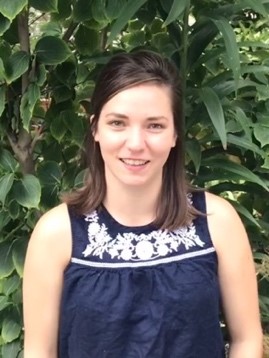 Eva Kostyu, Community Science Fellow, Thriving Earth Exchange
Eva Kostyu, Community Science Fellow, Thriving Earth Exchange
 Dr. Steven Emerman, Community Scientist
Dr. Steven Emerman, Community Scientist
Dr. Steven Emerman has a B.S. in mathematics from The Ohio State University, M.A. in geophysics from Princeton University, and Ph.D. in geophysics from Cornell University. He taught hydrology and geophysics for 31 years, including teaching as a Fulbright Professor in Ecuador and Nepal, and has 70 peer-reviewed publications in these areas. After retirement from university teaching, Dr. Emerman founded Malach Consulting, which specializes in evaluating the hydrologic impacts of development projects, such as dams, mines, pipelines, residential development, and timber harvesting. Dr. Emerman has evaluated proposed and existing development projects in North America, South America, Europe, Africa, Asia and Oceania, and has testified before the U.S. House of Representatives Subcommittee on Indigenous Peoples of the United States. He is the Chair of the Body of Knowledge Subcommittee for the U.S. Society on Dams and a co-author of Safety First: Guidelines for Responsible Mine Tailings Management.
(c) 2024 Thriving Earth Exchange